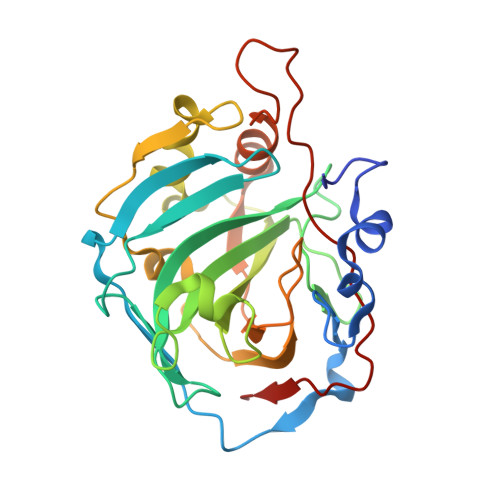2-Benzylpiperazine: A new scaffold for potent human carbonic anhydrase inhibitors. Synthesis, enzyme inhibition, enantioselectivity, computational and crystallographic studies and in vivo activity for a new class of intraocular pressure lowering agents.
Chiaramonte, N., Bua, S., Ferraroni, M., Nocentini, A., Bonardi, A., Bartolucci, G., Durante, M., Lucarini, L., Chiapponi, D., Dei, S., Manetti, D., Teodori, E., Gratteri, P., Masini, E., Supuran, C.T., Romanelli, M.N.(2018) Eur J Med Chem 151: 363-375
- PubMed: 29635168
- DOI: https://doi.org/10.1016/j.ejmech.2018.04.002
- Primary Citation of Related Structures:
6EVR, 6EX1 - PubMed Abstract:
Two series of 2-benzylpiperazines have been prepared and tested for the inhibition of physiologically relevant isoforms of human carbonic anhydrases (hCA, EC 4.2.1.1). The new compounds carry on one nitrogen atom of the piperazine ring a sulfamoylbenzamide group as zinc-binding moiety, and different alkyl/acyl/sulfonyl groups on the other nitrogen. Regio- and stero-isomers are described. The majority of these compounds showed Ki values in the low-medium nanomolar range against hCA I, II and IV, but not IX. In many instances interaction with the enzyme was enantioselective. The binding mode has been studied by means of X-ray crystallography and molecular modelling. Two compounds, evaluated in rabbit models of glaucoma, were able to significantly reduce intraocular pressure, making them interesting candidates for further studies.
Organizational Affiliation:
University of Florence, Department of Neuroscience, Psychology, Drug Research and Child's Health, Section of Pharmaceutical and Nutraceutical Sciences, Via Ugo Schiff 6, 50019, Sesto Fiorentino, Italy.


















